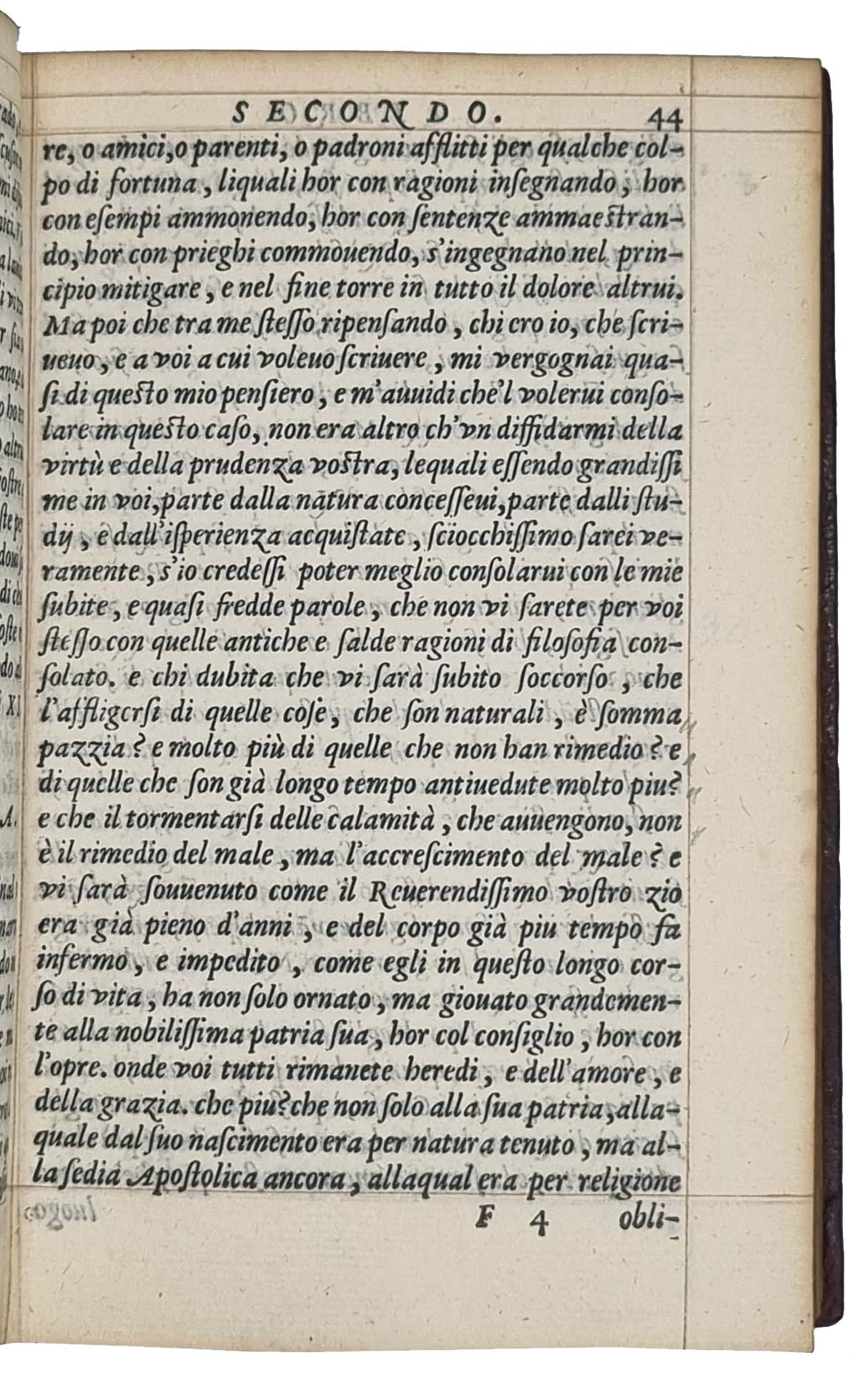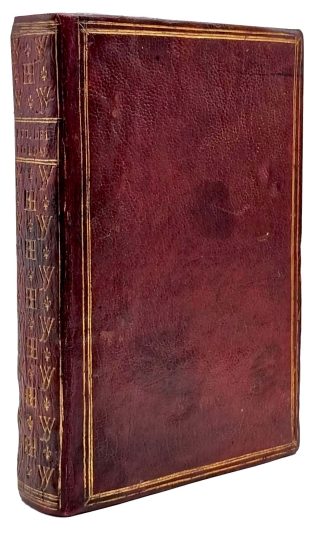TOLOMEI, Claudio.
HANDSOME AND NOBLE RED MOROCCO
Delle lettere di M. Claudio Tolomei Libri VII
Venice, Altobello Salicato, 1572£2,850.00
8vo, ff. 296 (viii). Italic letter, text within fine red ink frame throughout, printer’s device to t-p, woodcut floriated initials, typographical ornaments, charming half-page woodcut map of Monte Argentario (Tuscany). Light age yellowing, small tear from lower outer blank corner of fol. 7, occasional pencilled numbers. An excellent copy, crisp and clean, in c. 1600 French morocco, covers triple gilt ruled, spine with an all-over semée of alternate gilt fleurs-de-lis tools, interlaced initials ‘BB’ and ‘λλ’, very slight restoration above tail band, a.e.g.
Most attractive copy of Tolomei’s influential collection of letters, in a handsome 17th century French gilt morocco binding. The two monograms of interlaced Bs and “λλ” appear very similar on a binding realised for Léon de Bouthillier (1608-1652) and reproduced by Guigard (Vol I, p. 84). Léon de Bouthillier was Count of Chavigny, conseiller du Roi at the age of 19 and secretary of state for foreign affairs at 24. In 1635, he signed a treaty of alliance with Holland and Sweden. Initially a friend of Mazarin, he conspired against him after the death of Louis XIII and was twice arrested during the Fronde. Léon was the owner of a rich library, part of which he inherited from his father Claude.
Claudio Tolomei (1492-1556) was an Italian bishop, writer, literary critic and diplomat. His letters (more than 300) are among the most interesting and finely written of the Renaissance, discussing the arts, philosophy, language and literature, architecture and political theory. First published in 1547, they went through 22 editions in the 16th century. Tolomei’s correspondents comprise the most celebrated Italian humanists and politicians of the time: Annibal Caro, Paolo Manuzio, Francesco Guicciardini, Bernardo Tasso (father of Torquato), Cardinal Farnese, Henry II and Francis I of France. In a letter to Luigi Alamanni, Tolomei praises his recently published poem on agriculture; in another to Pietro Aretino he talks about their friendship. The most important letters are perhaps those addressed to the ambassador and politician Agostino Landi (d. 1555): in a long one, Tolomei discusses the punishments that princes can impose on their subjects, in another he explains how a perfect city could be built. The latter is here illustrated with a charming woodcut map depicting Monte Argentario (the same appearing in the first edition), a promontory of southern Tuscany, proposed as the site for the building of a new city. Remarkably, women are well represented in the collection: Veronica Gambara, Vittoria Colonna, and Giulia Gonzaga recur regularly.
USTC 859304; EDIT16 CNCE 30511; Adams T789; Harward It. 500 (first ed.). This ed. not in Brunet, Graesse; BM STC It. Worldcat records only three copies in the US (Amherst College, University of Oregon, Huntington).In stock





